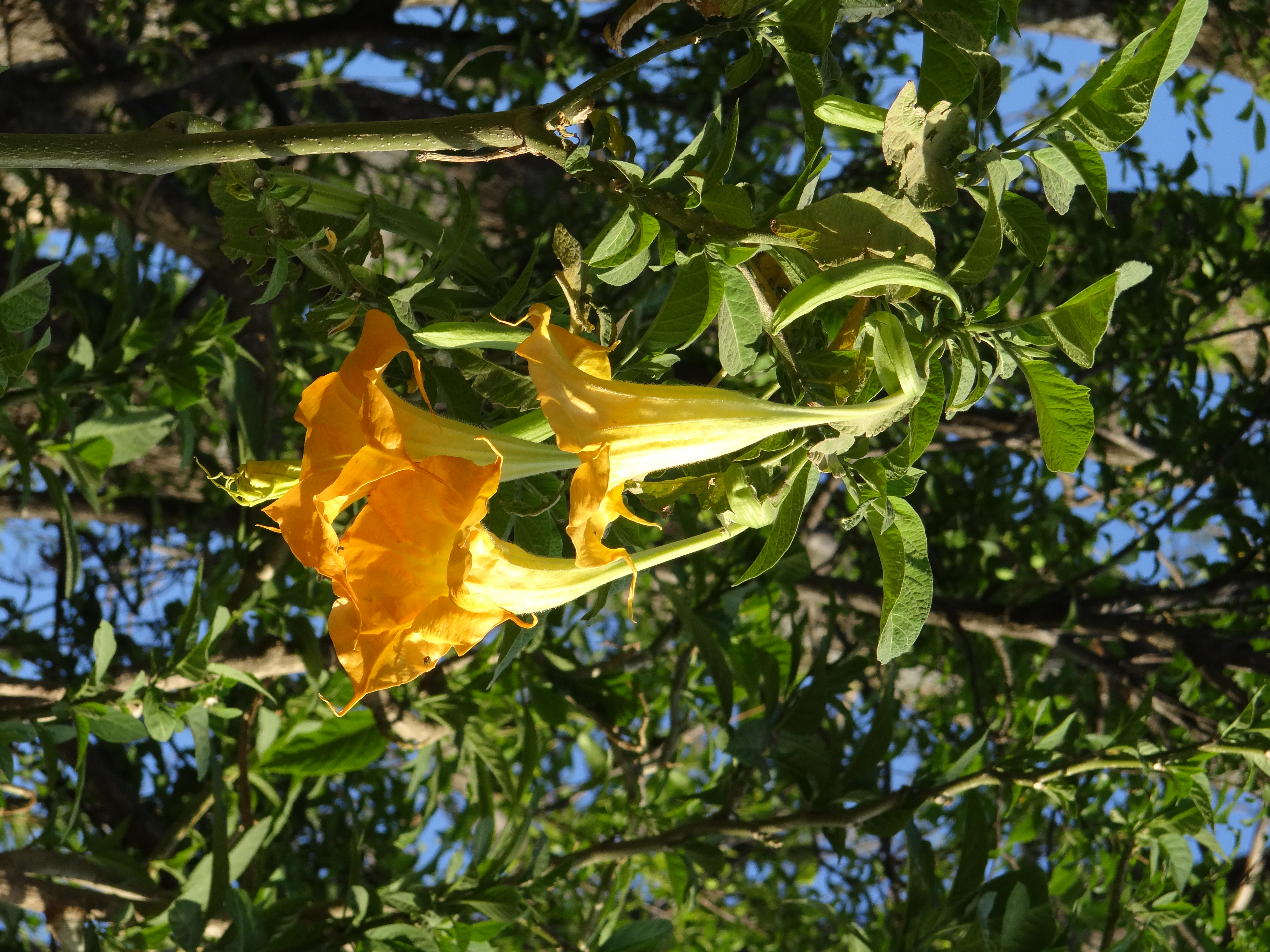The Brugmansia's New Home
First published in Sanctuary Asia,
Vol. 43
No. 8,
August 2023
By Soham Kacker
Contemporary discourse in conservation widely expresses the need to restore species to their natural ecosystems, to offer them protection within their specific habitats or landscapes. But what happens if a species has no native or natural habitat in which it is to be returned? Is it possible that the reason for the survival of a species rests entirely on its relationship with humans? Does conservation have a place for these supposedly dispossessed plants? To even begin to answer these questions, may I introduce you to one such plant with a remarkable story: the Brugmansia, or Angel’s trumpet.
In 1753, Carl Linnaeus classified the first species of Angel’s trumpet as Datura arborea from Brazil, and later taxonomists shifted it to the genus Brugmansia based on differences in morphology. Since the late 1700s, botanists and explorers studying the flora of South America have described more species of Brugmansia, but have never found a truly wild population. No herbarium specimens have been found of the genus from that period that were wild collected, and even among contemporary experts, no one has ever claimed to have seen a population in the wild. In the 1970s, American botanist, plant collector, and specialist on Brugmansia, Tommie Earl Lockwood suggested that although a wild range could indeed be established using certain features of plants seen in situ, the survival of Brugmansia has largely been on account of their association with humans via cultivation. All seemingly wild populations have been found to be escapes from cultivation, and likely formed by vegetative or asexual propagation, for instance by the rooting of stem fragments. Without the presence of active seed dispersal and sexual reproduction, a population cannot be said to be biologically viable.
_1691481851.png)
Brugmansia suaveolens, the most common species introduced in India, growing wild in a roadside ditch in Himachal Pradesh. This species is thought to have become naturalised in some parts of the Himalaya. Photo: Soham Kacker.
In the absence of a viable wild population, the IUCN Red List lists them as ‘Extinct in the Wild’, the most critical category of endangerment. Some scientists suggest that the reason for their failure to reproduce is the extinction of their seed disperser – thought to be a large South American mammal. However, Brugmansias thrive in cultivation. Since the first reports of 18th Century botanists, their use by South American shamans and traditional healers has been studied extensively. They contain many categories of alkaloids and psychoactive substances, which have both medicinal and religious value. But these same substances also make them very toxic – which means their applications are linked to preserving traditional knowledge on how to correctly use them. Brugmansias were widely cultivated for these properties; in recent times, the loss of this traditional knowledge has led to a drive to eradicate them from South American gardens because of their toxicity.
Interestingly, their ease of cultivation, quick growth, and abundance of graceful, strongly-scented flowers have made them a popular choice of garden plant very far from their supposed home. In India, Brugmansias were introduced for their ornamental value in the 1900s, and have been widely adopted as a form of ‘dhatura’ – a name which in Latin and the vernacular usually refers to the flowers of another, native plant – Datura stramonium. It is cultivated widely, and has even become naturalised in the Himalayan foothills – and it has been observed being pollinated by native bees.

A yellow variety of a Brugmansia species (likely B. suaveolens), cultivated as an ornamental plant for gardens. Photo: Soham Kacker
Most intriguingly though, there are reports of it being dispersed and germinating from seeds – something it does not do in its ‘native’ habitat. Could the Brugmansia have made the long journey from the Andes to find a new home in the Himalaya? No field studies have looked into the natural history of these plants in India, nor at the potential implications on native species of plants and animals, but so far, the species has not become invasive. On a recent drive through Himachal Pradesh, I came across a small nullah (stream), the banks of which were festooned with Brugmansias. Growing under the native oak and fig trees, shaded by native bamboo, and interplanted with native ferns and flowering creepers, it seemed deceptively… native! Here, Brugmansia may form relationships – with humans and other species – which will ensure its survival as part of a new ecology. Conservationists must in turn question the value and validity of these novel ecosystems – and recognise their potential for preserving species, whether or not they may be native.
Further Reading
Hay, A. 2014. Brugmansia suaveolens. The IUCN Red List of Threatened Species 2014: e.T51247699A58913403. https://dx.doi.org/10.2305/IUCN.UK.2014-1.RLTS.T51247699A58913403.en. Accessed on July 14, 2023.
Lockwood, T. E. (1973). ‘Generic Recognition of Brugmansia’. Botanical Museum Leaflets. 23 (6): 273–283. doi:10.5962/p.168561.
Soham Kacker is passionate about plants and has apprenticed at the Auroville Botanical Gardens and the Aravalli Biodiversity Park. Based in New Delhi, he is currently a research student at Ashoka University, focusing on plant ecology and conservation.

.png)
_1691481851.png)